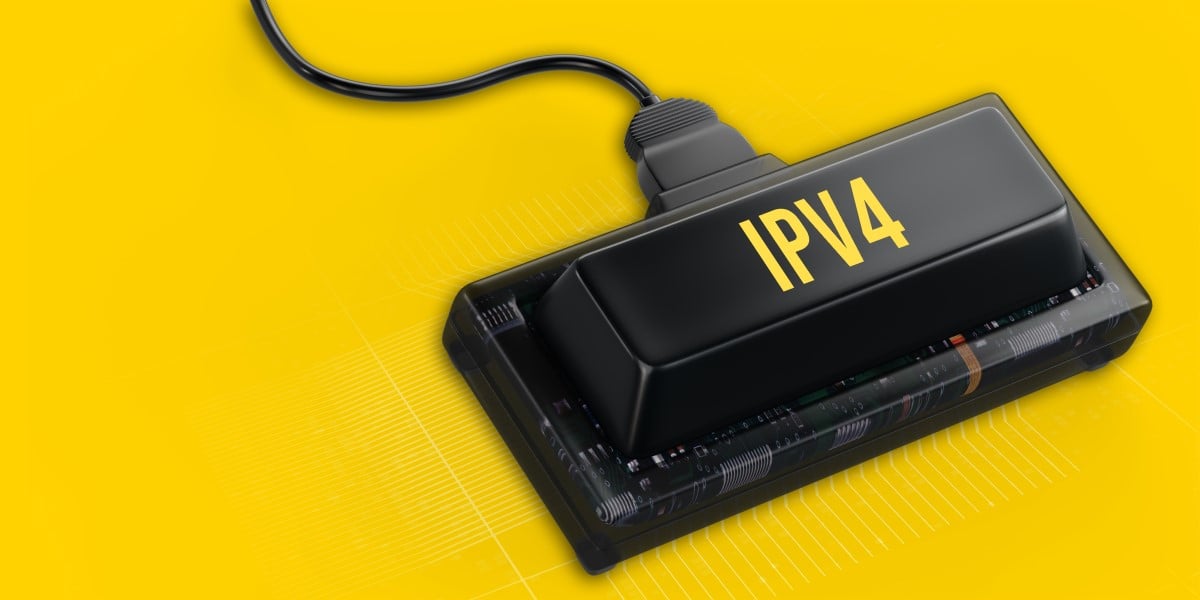250 Million-plus Unused IPv4 Addresses Should Be Left Alone, Argues Network Boffin

The 240/4 block of IPv4 addresses – the six percent of the available IPv4 space that is currently not available for public use – should be left alone rather than being added to the pool of available internet resources, according to Geoff Huston, chief scientist of the Asia Pacific Network Internet Center.
Huston shared that opinion in a post detailing experiments to reach the 240/4 block – the range of IP addresses from 240.0.0.0 to 255.255.255.254.
As The Register reported last February, early in the history of the internet the 240/4 block was reserved for future use. While Linux can happily handle that zone as a source of or destination for traffic, most networking equipment deliberately doesn't recognize its existence – and those boxes can't easily be upgraded.
But with IPv4 addresses running out, various efforts have sought to make the 240/4 block available to the public.
Huston's post details a recent effort to understand whether internet infrastructure could use the 240/4 block if it were made available.
Long story short: no. Isolated and small pockets of internet infrastructure can do the job, but Huston and his collaborators found the block is reachable from just 0.0452 percent of the internet.
In conversation with The Register, Huston argued that any effort to make the block available would be futile.
"Two thirds of the internet is not on IPv6 and is thriving on network address translation (NAT)," he argued.
"The open wound of the internet is that we rely on really cheap customer premises equipment in consumer land," he added – and few of those devices are ready to work with the 240/4 block. But because those devices nearly always use NAT – and that tech clearly works at the scale of today's internet – there's no incentive to replace them. Any effort to do so would mean consumers need new routers/modems, which would cost them money without improving their online experience.
Huston doubts an incentive could be found, as the price of IPv4 addresses has stabilized – a market signal that the 240/4 block's resources are not in demand. Service providers therefore likely won't push for a change of status.
- Proof-of-concept code released for zero-click critical IPv6 Windows hole
- It's 2024 and we're just getting round to stopping browsers insecurely accessing 0.0.0.0
- China pushes for network upgrade blitz as IPv6 adoption slows
- IPv4 address rentals to mint millions of dollars for AWS
Huston also expressed concern that freeing the block for public use would mean myriad new routes become available – meaning roughly 7,000 network operators around the world would get the job of assessing their safety. Again, he feels there is little incentive to do so, given the internet and IPv4 numberspace as currently constituted work well, and that IPv6 is a more-than-adequate replacement for those who can't rely on IPv4. Huston pointed to India's widespread adoption of IPv6 – after the nation missed out on an IPv4 allocation commensurate to its population – as an example of a scenario in which NAT just can't do the job, and IPv6 is therefore necessary.
Huston therefore argues that for many network operators and nations, moving from IPv4 to IPv6 is also not necessary. Extensive use of IPv4 NAT, he argues, will allow connection of as many devices as is possible if each were given a unique IPv6 address.
And the 240/4 block can therefore remain untouched and unloved, without that status hurting anyone. ®
From Chip War To Cloud War: The Next Frontier In Global Tech Competition
The global chip war, characterized by intense competition among nations and corporations for supremacy in semiconductor ... Read more
The High Stakes Of Tech Regulation: Security Risks And Market Dynamics
The influence of tech giants in the global economy continues to grow, raising crucial questions about how to balance sec... Read more
The Tyranny Of Instagram Interiors: Why It's Time To Break Free From Algorithm-Driven Aesthetics
Instagram has become a dominant force in shaping interior design trends, offering a seemingly endless stream of inspirat... Read more
The Data Crunch In AI: Strategies For Sustainability
Exploring solutions to the imminent exhaustion of internet data for AI training.As the artificial intelligence (AI) indu... Read more
Google Abandons Four-Year Effort To Remove Cookies From Chrome Browser
After four years of dedicated effort, Google has decided to abandon its plan to remove third-party cookies from its Chro... Read more
LinkedIn Embraces AI And Gamification To Drive User Engagement And Revenue
In an effort to tackle slowing revenue growth and enhance user engagement, LinkedIn is turning to artificial intelligenc... Read more

